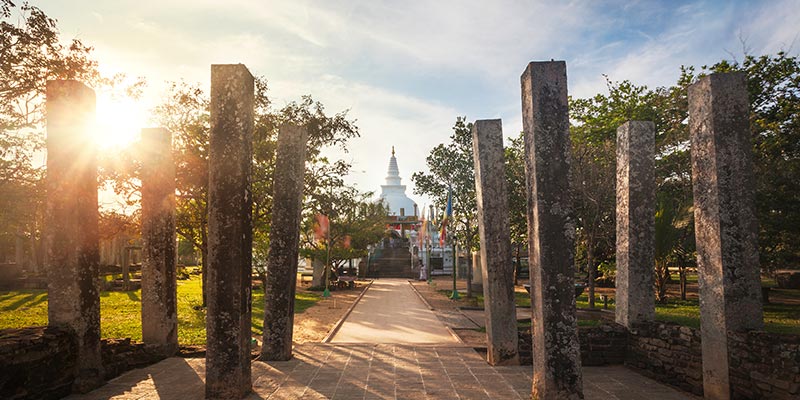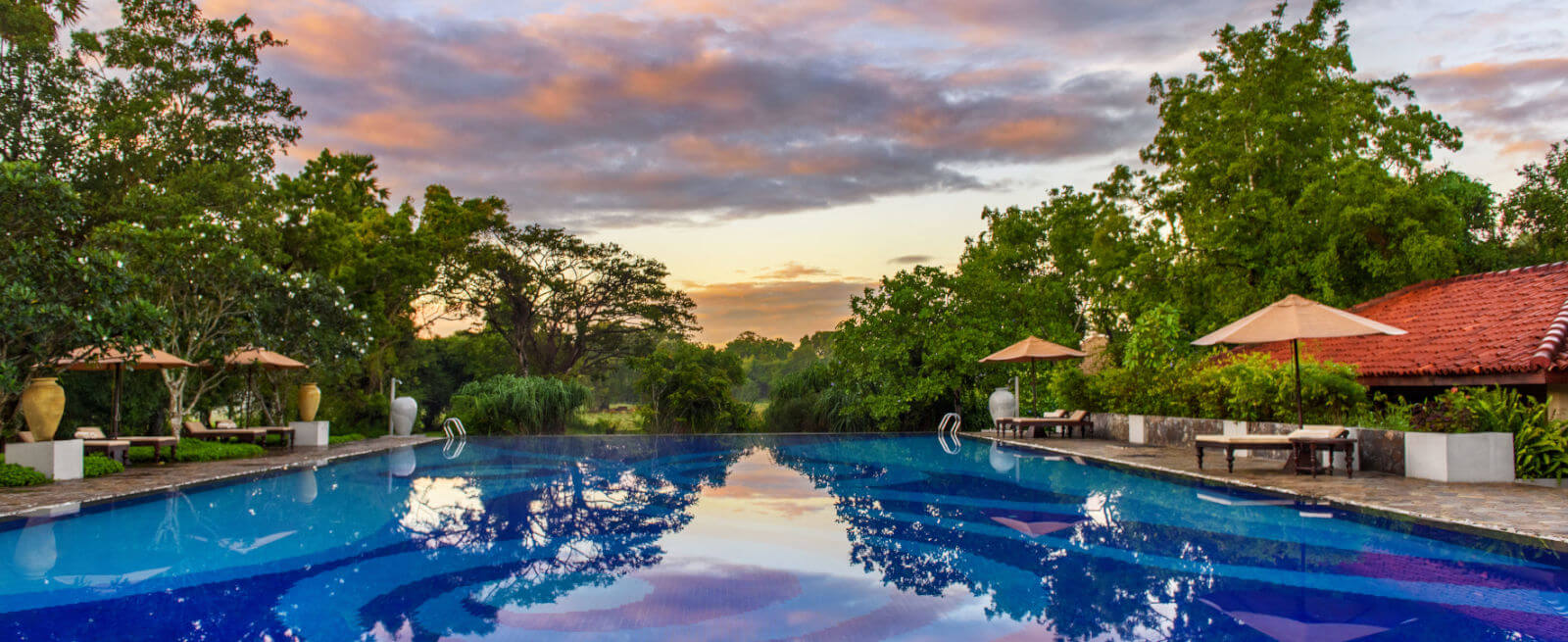Quench your culture thirsty appetite by exploring the ancient city of Anuradhapura, Sri Lanka. Proudly showcasing remnants of a prolific past, Anuradhapura was one of the first cities in the country. For over a millennium it stood proudly as the capital of the Anuradhapura Kingdom.
Encapsulating visitors with its prolific past, Anuradhapura, Sri Lanka is an intriguing city. One of the ancient capitals of the country, Anuradhapura is located in the north central province of Sri Lanka. Complete with ruins, irrigation systems, and temples, Anuradhapura is a UNESCO World Heritage Site.
A Paradise for history buffs, the entire city of Anuradhapura is a treat for the culture thirsty holidaymaker.
Basawakkulama Weva
Fascinating world class engineers and visitors simultaneously, Basawakkulama Weva was built during King Pandukabhaya’ time.
Exhibiting cutting edge features, well advanced for that period Abhaya or Basawakkulama is one of the oldest tanks in the country.
Archaeological Museum
The Archaeological Museum is a must visit for travellers who wish to get up close and personal with the history of the region.
Maintaining over hundreds of priceless artefacts, the museum parts information regarding the art, architecture and lifestyle of that period.
King Mahasena’s Palace
A well-known site in Anuradhpura, King Mahasena ‘s Palace stands symbolizing the once flourishing kingdom of Anuradhapura. The ruins here include a moonstone carved in granite finished with intricate and symbolic motifs. A treat for any art lover.
Atamasthana
Tracing Buddhist architecture back to this period, Atamasthana or eight sacred places is popular excursion for sightseers. Sites here include Jaya Sri Maha Bodhiya, Ruwanwelisaya, Thuparamaya, Lovamahapaya, AbhayagiriDagaba, Jetavanarama, Mirisaveti Stupa and Lankarama.
Kuttam Pokuna
Constructed within a landscaped garden, Kuttam Pokuna are twin ponds that were used by monks in that period for their bathing and cleansing rituals. Complete with intricate carvings, the twin ponds are a primary example of the exceptional hydrological engineering prowess ancient Anuradhapura possessed.
The Folk Museum
Found adjacent to Thuparama road, the Folk Museum exhibits objects used by the folk community. Its importance lies in the fact that these communities are over a thousand years in age. The collection displays objects used in their everyday lives. This includes weaponry, vi bissa (vaults that stores grains), utensils and more.
Gal Palama
Gal Palama roughly translated in to stone bridge is situated near Kuttam Pokuna. The bridge made out of pure stone is one of the oldest bridges in the country. Although only a part of the bridge is remaining here, it is still definitely worth a visit!
Isurumuniya Temple
The vicinity does not only boast of ancient architecture but of a beautiful story of love that knows no boundaries. The spectacular site includes the Isurumuniya Temple, a picturesque pond with an intricate elephant carving and more. The most interesting remnant here is the carving of the Isurumuniya lovers. The popular myth revolving around it relates that Prince Saliya, the son of one of the most celebrated monarchs in history, King Dutugemunu discards his hereditary rights to marry a woman of low caste – Ashokamala.
Ranmasu Uyana
Ranmasu Uyana or the Park of the Goldfish is situated close to the Isurumuniya Temple. The water for the scenic pond was supplied by the underground ducts connected to the Tissa Tank. There is unsupported belief that a particular carving here is a result of extra-terrestrial activity.
Abhayagiri Musuem
The Chinese Buddhist monk Fahien travelled to Anuradhapura in the 5th century BC. He resided here at the Abhayagiri monastery and translated Buddhist inscriptions in to Chinese and returned to china. The museum contains a residual collection of this site which includes plates, jewellery, sculptures and more.

